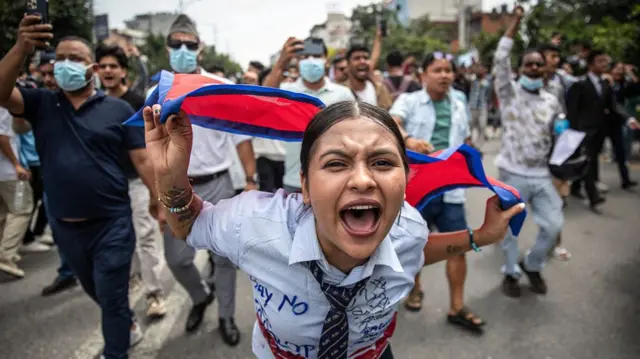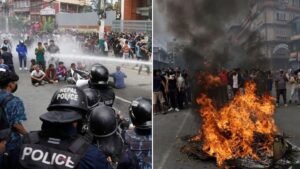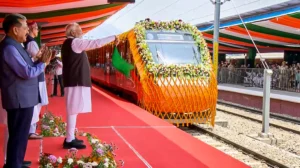Nepal’s young generation shakes the nation’s political foundations through massive street demonstrations and digital activism. The Gen Z protest movement successfully forced the Prime Minister’s resignation after weeks of sustained pressure from youth activists. Security chiefs now call for calm while protesters celebrate their unprecedented political victory.
Breaking Down the Youth Movement That Changed Everything
The protest began when young Nepalis organised against government corruption and economic mismanagement affecting their future prospects. Social media platforms became vital tools for coordinating demonstrations across major cities throughout the mountainous nation. University students led the charge while high school pupils joined their older peers in demanding systemic change.
Live updates from protest sites showed thousands of young people marching through Kathmandu’s busy streets daily. Their signs displayed messages about unemployment, inflation, and political accountability that resonated with frustrated citizens nationwide. The movement gained momentum as economic conditions worsened and government responses proved inadequate.
International observers noted the sophisticated organisation behind these youth-led demonstrations compared to previous political movements. Gen Z activists used encrypted messaging apps to coordinate actions while avoiding government surveillance and potential crackdowns.
Political Earthquake Forces Prime Minister’s Historic Resignation
The Prime Minister’s unexpected resignation announcement came after mounting pressure from both street protests and political allies. His televised speech acknowledged the youth movement’s legitimate concerns while defending his administration’s economic policies and governance record. The resignation represents the first time in Nepal’s history that youth protests directly caused a sitting PM’s departure.
Political analysts suggest this development marks a generational shift in Nepalese politics where young voices carry unprecedented influence. Traditional party leaders now scramble to address youth concerns while maintaining their established power structures. The resignation creates uncertainty about Nepal’s political stability during this crucial transition period.
Opposition parties quickly claimed credit for the PM’s departure while youth leaders insisted their grassroots movement deserves primary recognition. This tension between established political forces and emerging youth leadership could shape Nepal’s democratic future significantly.
Security Chiefs Call for Restraint and Dialogue
Military and police leadership issued joint statements urging all parties to pursue peaceful solutions through established democratic processes. Security chiefs emphasised their commitment to protecting peaceful protesters while maintaining public order and national stability. They warned against violence while acknowledging citizens’ constitutional rights to peaceful assembly and expression.
The security establishment’s measured response contrasted sharply with heavy-handed approaches used during previous political crises. Officials stressed the importance of dialogue between government representatives and protest leaders to address underlying grievances constructively. This approach reflects lessons learned from past mistakes when excessive force escalated tensions unnecessarily.
Key security priorities include:
- Maintaining peaceful protest environments across major cities
- Preventing clashes between opposing political groups
- Protecting critical infrastructure and government buildings
- Ensuring continued essential services during transition periods
- Facilitating safe spaces for political negotiations
Intelligence agencies also monitor potential foreign interference while domestic political parties position themselves for upcoming negotiations.
Economic Grievances Driving Youth Anger Across the Nation
Young Nepalis face severe economic challenges, including high unemployment rates exceeding 15% among recent graduates. Rising inflation affects basic necessities while wages remain stagnant across most employment sectors. Many university graduates migrate abroad seeking better opportunities, creating brain drain concerns for national development.
The tourism industry, traditionally a major employer, struggled following global events, while government support proved insufficient. Youth entrepreneurs face bureaucratic obstacles and limited access to capital for starting businesses. Educational institutions lack resources while student debt burdens increase without corresponding job market improvements.
Protesters specifically demand immediate action on job creation, inflation control, and corruption investigations targeting high-level officials. Their economic manifesto outlines concrete policy proposals rather than vague political slogans typical of previous movements.
Social Media’s Crucial Role in Organising Mass Demonstrations
Digital platforms enabled rapid organisation and communication among geographically dispersed youth activists throughout Nepal’s mountainous terrain. Twitter hashtags and Facebook groups provided coordination mechanisms, while livestreaming allowed real-time documentation of events. TikTok videos spread protest messages to younger audiences who might not engage with traditional media.
Government attempts to restrict internet access backfired by generating additional anger among tech-savvy youth populations. VPN usage spiked dramatically as activists circumvented censorship efforts while maintaining communication networks. International attention increased as protest footage spread across global social media platforms.
The movement’s digital sophistication impressed international observers who noted similarities to successful youth movements in other countries. However, Nepal’s unique cultural and political context shaped how these tools were deployed effectively.
What Comes Next for Nepal’s Political Landscape
The Prime Minister’s resignation creates opportunities for significant political reforms while also introducing considerable uncertainty about governance continuity. Protest leaders must now transition from opposition activism to constructive political engagement with established institutions. Their ability to maintain unity while engaging in complex negotiations will determine their long-term political influence.
International partners watch closely as Nepal’s democratic institutions navigate this unprecedented youth-driven political transition. Regional powers have significant interests in Nepal’s stability given its strategic location between major Asian economies. The outcome could influence similar movements across South Asia, where youth populations face comparable challenges.
Security chiefs continue monitoring developments while preparing for various scenarios, including potential coalition negotiations and early elections. The military’s commitment to remaining neutral during political transitions remains crucial for democratic stability.
As negotiations begin between various stakeholders, Nepal’s youth have already achieved something remarkable by forcing accountability from established political leadership through sustained peaceful pressure.








Be First to Comment